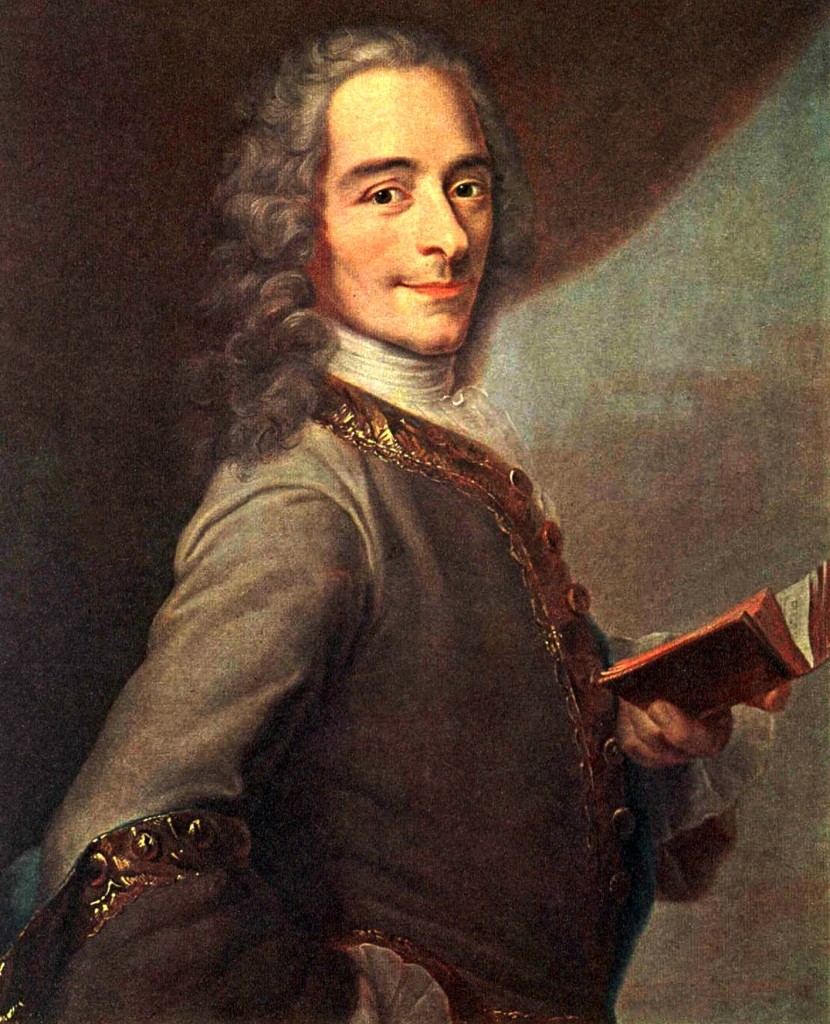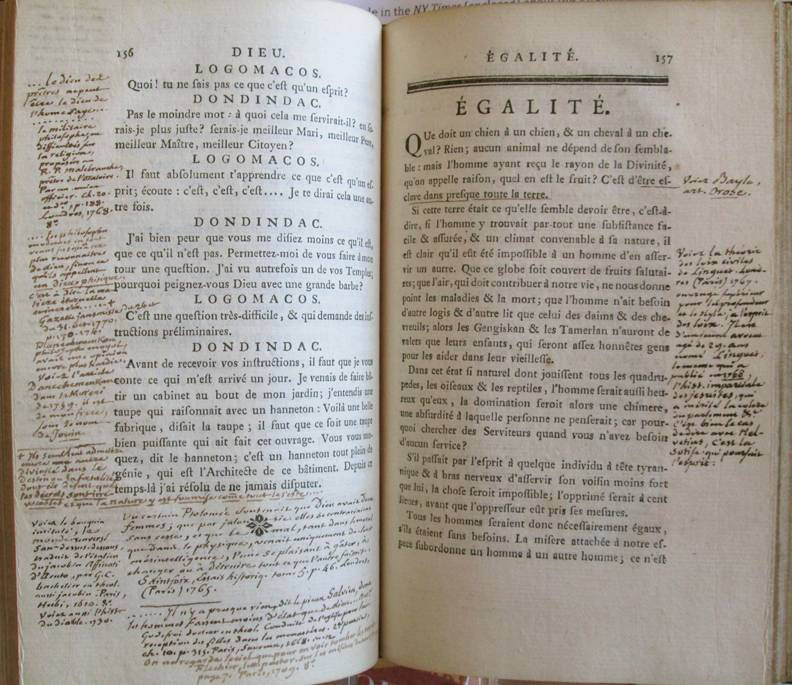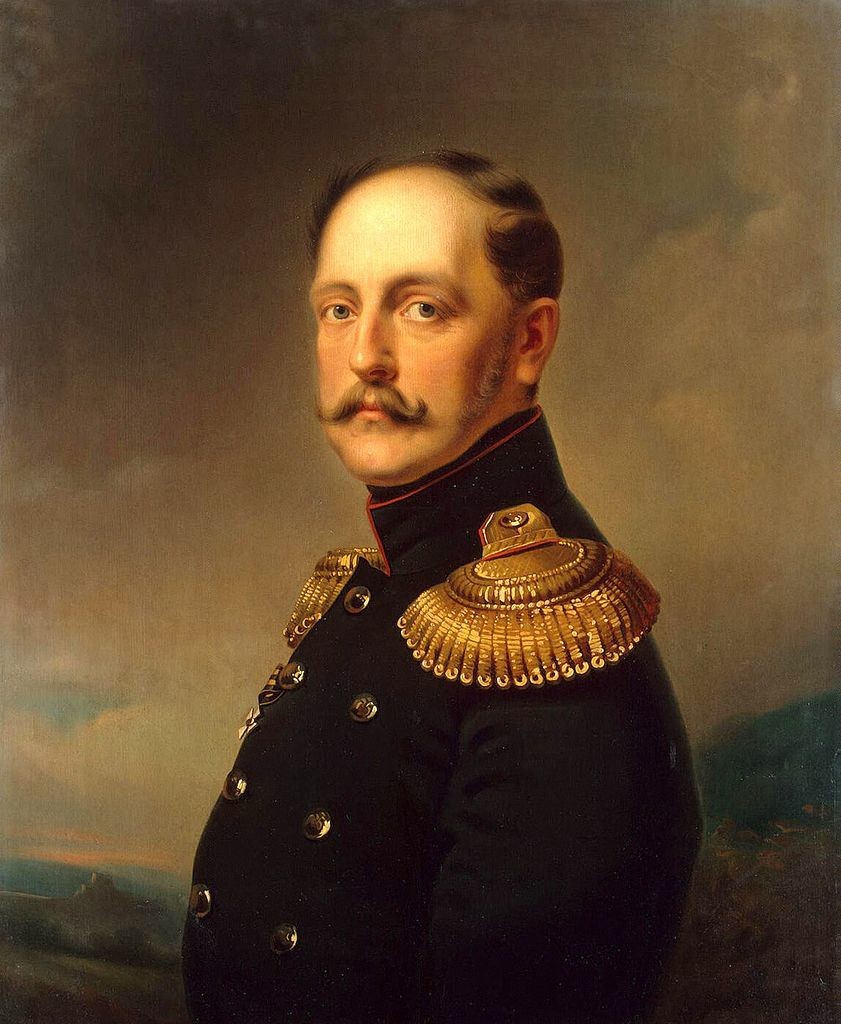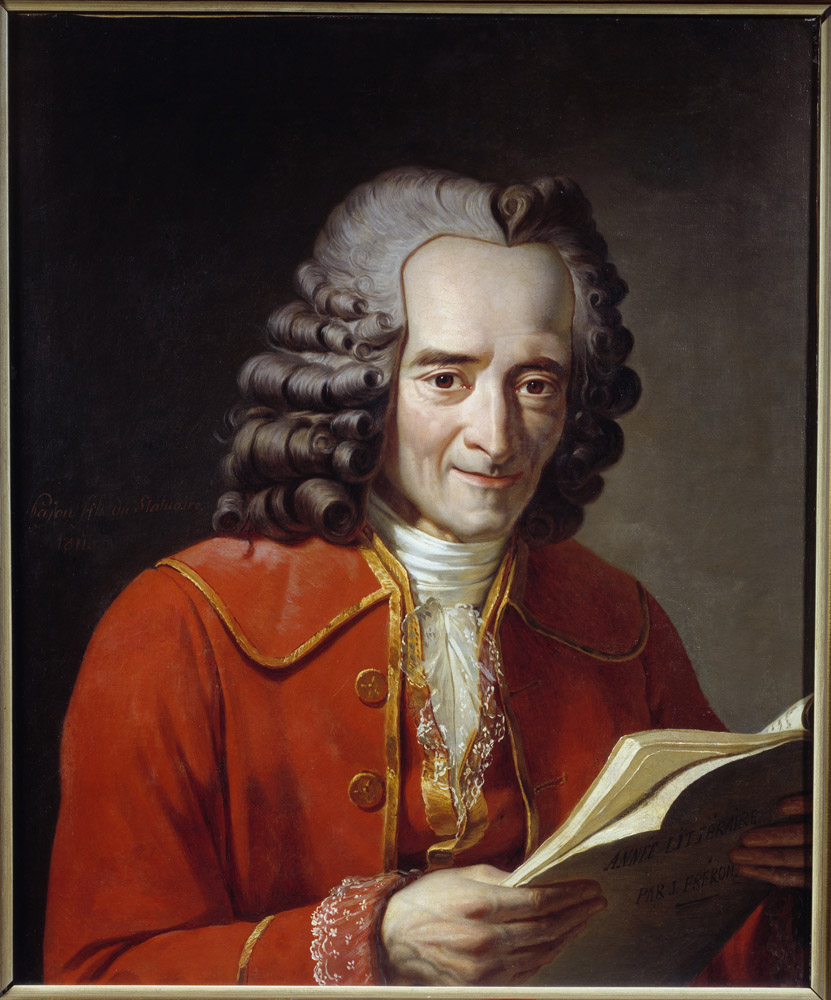The article below was translated from Russian by Helen Azar.

Note from the translator:
When I first showed up at the Tsarskoe Selo Rare Book Fond for my library school internship, I found out that they just made an amazing discovery: two previously unidentified books from the vast collection of books once owned by the famous French philosopher, François-Marie Arouet, better known as Voltaire. At this time, it was thought that all of Voltaire’s books, which were brought to Russia by Empress Catherine the Great upon his death, were accounted for, and thousands of his marginalia had been transcribed and published. But it seemed that two of these books slipped through the proverbial cracks. Voltaire’s handwriting in the marginalia of these two books, held for years in The Rare Book Fond at the Tsarskoe Selo Museum. Somehow no one recognized them for what they were, for all these years.
BOOKS WITH VOLTAIRE MARGINALIA AT THE IMPERIAL RARE BOOK LIBRARY IN TSARSKOE SELO
By Irina Zaitseva, Rare Book Curator at the Tsarskoe Selo Museum.
Nearly two hundred and thirty years has passed since Voltaire wrote his last lines. From that time on, thousands of research studies by hundreds of scholars have been dedicated to analysis of the ingenious manuscripts composed by this great Ferney philosopher. Just when it seemed that not a single phrase inscribed by Voltaire could have escaped the scrutiny of his fervent devotees, a significant discovery occurred in a Russian museum. In June of 2005, a source of abundant new material for Voltaire scholars was identified: some previously unknown annotations made by the philosopher’s own hand in the margins of two books that once belonged to him, currently kept in the Rare Book Fund of the State Museum-Reserve at Tsarskoe Selo.
The first of the two books is F.S.М. Fénélon’s “Oeuvres Philosophiques, ou Demonstration de L’existence de Dieu: Divisé en deux volumes” (Amsterdam, 1731)[1]; the second is “Essai Général de Tactique” by J.A Guibert (Londres, 1772)[2] which consists of two volumes bound in one. In the pages of the two books are a total of 69 of Voltaire’s marginalia. These annotations are related to the issues that this philosopher-humanist of the 18th century was mainly concerned with: the question of the existence of God, and of the relationship between rulers and nations.
In addition to textual annotations, the books contain other traces of having been read: selected underlined text – fragments that presumably caught the reader’s interest, vertical markings in the page margins, and bookmarks made of 18th century unmarked white paper.
It is important to note that Guibert’s book is absent from the Ferney catalogue[3] composed by Voltaire’s secretary J. L. Wagnière. However, no definite conclusions should be made based on this fact, since a rather large amount of books confirmed to have come from Voltaire’s library were not included in this catalogue for various reasons (or their records there are not completely correct), which makes it difficult to establish their bibliographic identity. Meanwhile, Voltaire’s correspondence does mention “Essai Général de Tactique” numerous times[4]. On November 11, 1773, Voltaire writes to Marquis Condorcet[5]: “Sa ‘Tactique’ n’est pas un ouvrage de belles-lettres, mais elle m’a paru un ouvrage de genie”. He also discusses this publication with Frederic II[6], Count d’Argental[7], and corresponds with Guibert directly, and even entertains him in his home[8].
Another book by Guibert, “Éloge du maréchal de Catinat”, (Édimbourg [Paris], 1775), also part of Voltaire’s personal library currently located in Rossiyskaya Natzionalnaya Biblioteka (RNB), is listed in the 1961 catalogue[9]. This book also contains evidence of having been read but lacks any markings (cat. № 1568).

Fenelone’s “Oeuvres Philosophiques…” is also listed in the 1961 catalogue[10], but this is a different, less complete 1764 edition[11], in a single volume, which unlike our volume does not contain the author’s written reflections. The Ferney catalogue includes “L’Existence de Dieu. Fenelon. 2”[12] but based on catalogue information it is impossible to decipher which edition of the book Wagnière had been referring to: the 1731 edition in two volumes or, perhaps the 1764 edition in two parts. Similarly, the 1764 edition kept in RNB, has Voltaire’s marks but in considerably lesser amount and volume.
The obvious question now arises: what is the history of the two books from Voltaire’s personal collection, and why were his annotations not previously discovered and identified? The fate of these two books reflects the fate of the entire Tsarskoe Selo imperial library collection.
During the Soviet era, scholars were not encouraged to study imperial collections as such, whereas imperial libraries as ideological subjects were completely off limits. Only the study of the art of bookbinding was permitted, avoiding any reference to the history of the books or their former owners. The bindings of the books from Voltaire’s collection did not attract much attention at the time: with spines made of brown leather, and front and back covers wrapped in dark brown paper with black speckled design – they were not in any way remarkable.
Upon the German military invasion of Tsarskoe Selo in 1941, the entire imperial book collection (about 39,000 volumes) was transported abroad by the occupants. At the end of World War II, part of the collection (8,746 volumes) was returned to Russia. However, at this time the Catherine Palace stood in utter ruins, while the Alexander Palace was now owned by the Academy of Sciences. Thus forsaken and dispossessed, the imperial books had to be distributed among various establishments. The greater part of the remaining collection ended up in Central Storage of the Museum Fund created at Pavlovsk Palace-Museum. The books had been stored there unpacked from 1946 until 2000 – when by the order of the Ministry of Culture of the Russian Federation, approximately 4,000 books containing accession numbers from the Alexander and Catherine Palaces stamped with the insignia of the Imperial Library at Tsarskoe Selo, were transferred from the State Museum-Reserve at Pavlovsk to the State Museum-Reserve at Tsarskoe Selo.
After the imperial book collection was returned to Tsarskoe Selo, it became obvious that a more thorough analysis was necessary, given that the pages of many of these books were full of marginalia called for attribution. Initial attempts to compare the handwriting of the notes in Fenelon’s and Guibert’s books with the handwriting of some of the Russian emperors did not produce any results. Hence the decision to consult the Manuscript Fund at the Russian National Library was made. This was when Natalia Alekseevna Yelagina, the Manager of the Western Fund Sector and Voltaire manuscript expert, recognized the familiar handwriting of the samples presented to her.

Numbers, written by the last imperial librarian, V.V. Shcheglov (1851 – 1917), which refer to particular bookcases where each book was originally located, can be found on the fly-leaves of all Tsarskoe Selo books. Our two books of interest are marked with the number “35”. From the 1918 Alexander Palace catalogues[13] it is known that the memorial library of Emperor Alexander I was stored in bookcases 35 and 36. In February 1827, Nicholas I ordered this library, which contained 826 volumes in total, to be transported to Tsarskoe Selo from the late Alexander I’s Winter Palace study.
Nicholas I, who often resided in Tsarskoe Selo during the early years of his reign, created a large library in four halls of the Alexander Palace. Books that once belonged to Peter III, Catherine II, Paul I and his consort Maria Pavlovna, and Alexander I and his consort Elizabeth Alexeyevna, were brought there from the Winter Palace and other imperial residences. Henceforth, a tradition of maintaining the libraries of the deceased Russian monarchs was established. Keeping these book collections intact was viewed as a form of memorial for their imperial owners, and this tradition continued at the Alexander Palace until the revolution in 1917.

During the lifetime of Alexander I, books from his own youth – approximately 1,500 volumes stockpiled by his grandmother Catherine the Great in the 1780’s, were stored in the residence built for him by Catherine – the Alexander Palace. Catherine’s own library of more than 1,000 volumes was kept in the Agate Rooms of the Cameron Gallery, also located in Tsarskoe Selo. Upon her death, Catherine willed her books to her favorite grandson, Alexander Pavlovich (later Alexander I). Both collections consisted mainly of antique classics, historical literature and 18th century fiction.
After 1812, Alexander I, who in his youth seldom read and was indifferent to religion, began to acquire a mystical leaning towards grandiose historical events. As a result, he developed great interest in religious reading and spiritual soul-searching. Consequently, the Emperor disposed of his personal libraries, which by this time contained books on many diverse subjects. In 1814, his personal Winter Palace library, consisting of more than 3,000 books, was transferred to the Hermitage Museum, and in 1816 – he donated both his collections: the Alexander Palace library and the Agate Rooms library inherited from Catherine II, to the Tsarskoe Selo Lyceum[14].

When the Emperor’s library was formed anew, the subjects that were acquired this time were mainly of religious, theosophical and moral, and also military content[15]. Alexander did not neglect the rich Hermitage library funds, which consisted of Catherine II’s book collections, particularly Voltaire’s library in which – Alexander must have been aware – the division between theology and history was the most extreme. Although since the reign of Catherine II, it was prohibited to violate the integrity of the Voltairian library, such restrictions did not apply to the Emperor. Thus, Voltaire’s books found themselves in Alexander I’s study and later in the Alexander Palace. During the 1827 transfer from the Winter Palace to Tsarskoe Selo, the catalogue, which also included Voltaire’s book collection, was created[16].
It is easy to understand Alexander’s interest, as a politician and a military leader, in the works of the famous French military figure Guibert. But since there was another edition of the same publication in the Emperor’s relatively small library17, we can assume that the Voltairian sample had attracted Alexander’s attention specifically because of its marginalia
Alexander Pavlovich was also partial towards Fenelon: in a letter to his favorite sister Catherine Pavlovna, whose reading material he supervised, Alexander singles out Fenelon among all other recommended authors: “ Fénelon. He is incomparable to anyone else.”[17] In addition to Fenelon’s book with Voltaire’s marginalia, Alexander I’s collection contains 30 volumes written by this well-known French author.
Annotations made by Alexander I can be found throughout the pages of all these volumes, and only in the book from Voltaire’s collection had Alexander avoided making any such marks – perhaps out of respect for the great philosopher. Undoubtedly in this case Alexander was interested not only in Fenelon’s ideas concerning the existence of God, but also in the opinions of the well-known deist – Voltaire.

[1] Fénelon, François de Salignac de la Mothe (1651-1715). Oeuvres philosophiques, ou Demonstration de l’existence de Dieu. Tirée de l’Art de la Nature, dans la prémiere Partie: Et dans la seconde, des preuves purement intellectuelles, & de l’Idée de l’Infini même. Par feu Messire François de Salignac de la Motte Fenelon, Archévêque-Duc de Cambrai. Nouvelle edition, Où l’on a joint les Lettres du même Auteur sur divers sujets concernant la Religion & la Metaphysique, & ses Sermons. – Amsterdam: Chez Zacharie Chatelain, 1731. Т. 1. [18], 368 p. Т.2. [10], 478 p. 120
[2] Guibert, Jacques-Antoine-Hippolyte, Cte de (1743-1790). Essai général de tactique, précédé d’un discours Sur l’état actuel de la Politique & de la Science Militaire en Europe; Avec le plan d’un ouvrage intitulé: La France politique et militaire. T. 1-2. – Londres: Chez les Libraires Assosiés, 1772. [4], LVI, 151, [5], 133, [1] p., 27 f. il. 40
[3]Biblioteka Voltera. Katalog knig. Moskva, Leningrad, 1961. P. 1065 – 1150. Catalogue des livres de la bibliothèque (Le Catalogue de Ferney)
[4] This information was kindly provided by the RNB staff member, S.B Korolev.
[5] Best D 18.628
[6] Best D 18.601, Best D 18.670
[7] Best D 18.613
[8] Best D18.666, 18.671, 18.613
[9] Biblioteka Voltera. Katalog knig. Moskva, Leningrad, 1961
[10] Fénélon, François de Salignac de la Mothe. Oeuvres philosophiques. 1-e partie: Demonstration de l’existence de Dieu, tirée de l’art de la nature. 2-e partie: Demonstration de l’existence de Dieu et de ses attributes, tirée des preuves purement intellectuelles, et de l’idée de l’infini même. Par feu Messire François de Salignac de la Motte Fenelon, Archévêque-Duc de Cambray. Nouv. éd. [Publ. par Ramsay, et le marquis de Fénelon]. Paris, chez les fr. Estiénne, libr., 1746. XXIV, 543 стр. 17 см.
[11] The catalogue erroneously lists the publication year as 1746. The title page of the book lists the publication year as 1764.
[12] Catalogue des livres de la bibliotheque (Catalogue de Ferney). F. 33th
[13] For example: Lukomsky, G.K. An abridged catalogue of the Alexander Palace Museum. Pertrograd, 1918, p. 39.
[14] RGIA, Fund 487, description 20, file 1191, 1816. The transfer of the library located in the Alexander Palace, for the use of Tsarskoe Selo Lyceum.
[15] See Zaitseva, I.I. Otrazheniye v biblioteke Alexaksandra I evropeiskikh religioznikh vliyanii// Peterburg- mesto vstrechi s Evropoi: Materiali IX Tsarskoselskoi nauchnoi konferentzii. SPb., Izdatelstvo Gosudarstvennogo Ermitazha, 2003. p. 107-117.
[16] RGIA, Fund 472, description 12, file 205, 1827. Books, maps and plans that remained in Alexander I’s study after his death. The Fenelon book – listed on verso 4, the Guibert book – on verso 13, of this catalogue.
[17] Nikolai Mikhailovich, Grand Duke. [Editor] Perepiska imperatora Aleksandra I s sestroi knyaginei Yekaterinoi Pavlovnoi [Letters of the Emperor Alexander I and his sister, the Grand Duchess Catherine Pavlovna] SPb., Ekspeditzia zagotovlenia gosudarstvenikh bumag [Manufacture de papiers de l’État], 1910. p. 286-290.
Leave a comment